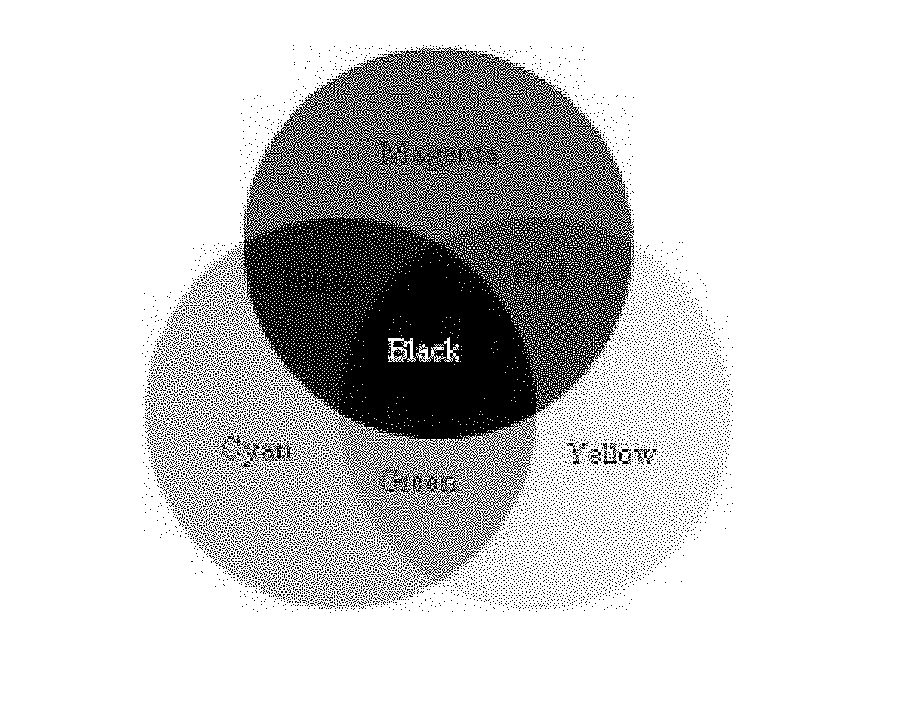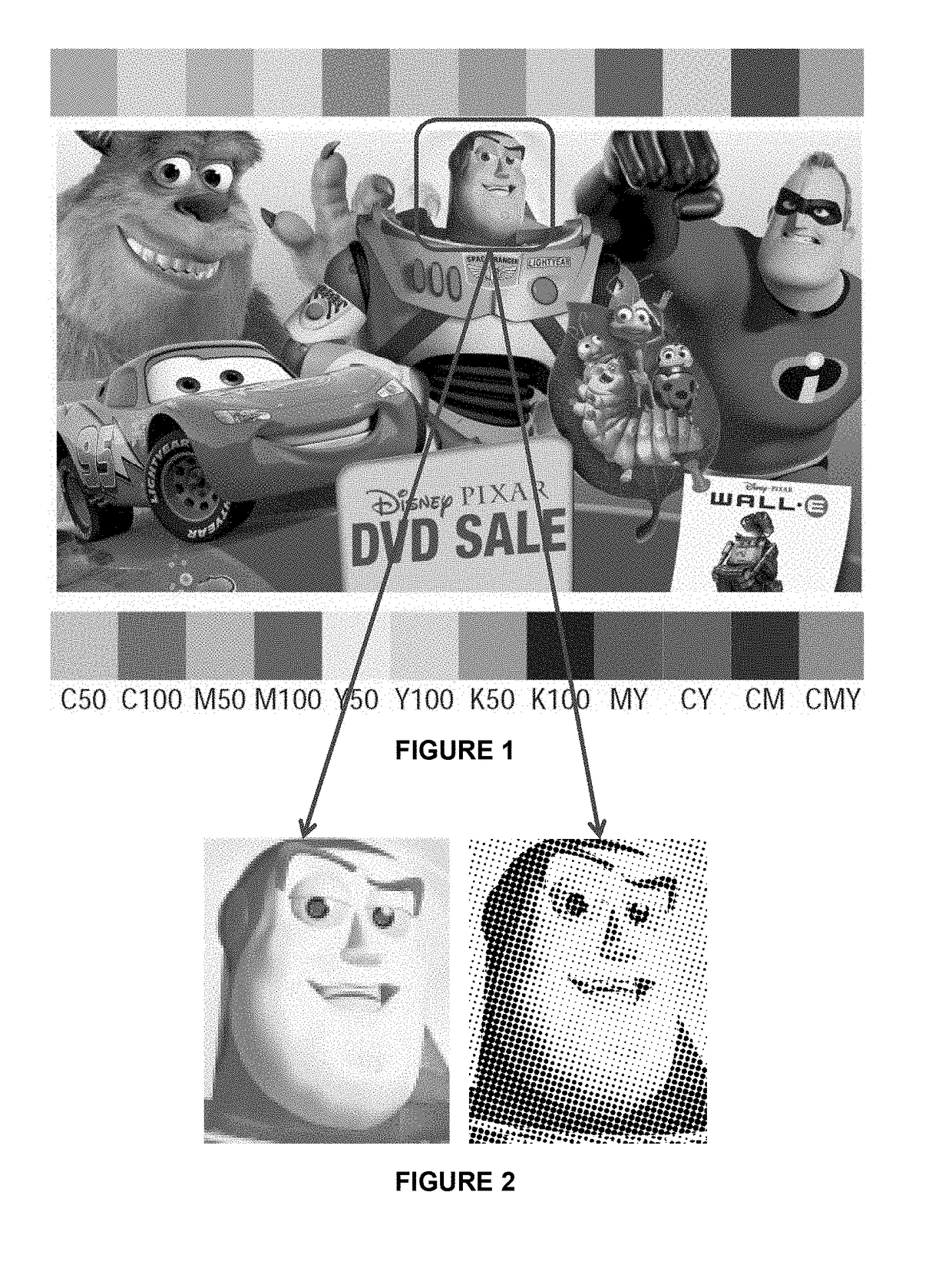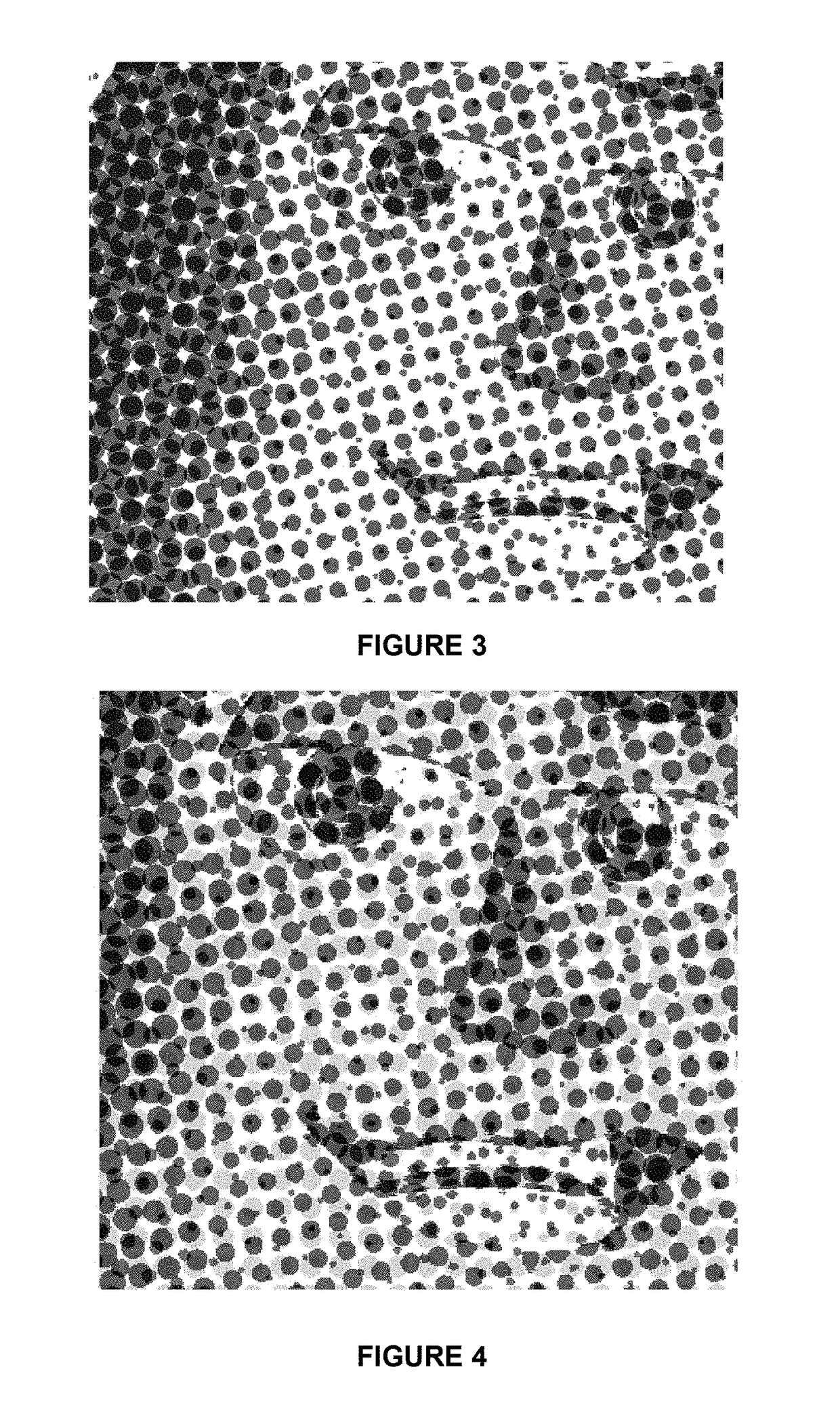Method of printing full colour images
a full colour, image technology, applied in the field of full colour printing, can solve the problems of lack of apparent, difficulty in achieving dark black colour, contaminating the other side and/or the printed substrate, etc., to reduce the effect of substrate colour or condition, increase the visible colour gamut, and increase the chroma version
- Summary
- Abstract
- Description
- Claims
- Application Information
AI Technical Summary
Benefits of technology
Problems solved by technology
Method used
Image
Examples
Embodiment Construction
[0095]With reference to the prior art images, such as FIG. 2, before platemaking for conventional printing presses, or at some point prior to depositing ink onto a digital press, 8 bit files (or greater) greyscale colour channels are converted to 1 bit (Black-and-White) files. Tonality is retained with a screening or halftoning technique. Different halftone or screening techniques exist in that halftone dots or screens may simulate grey levels or tonality via amplitude or frequency, sometimes referred to as periodic or non-periodic screens. The benefits of the current invention can be achieved with any halftone screening technique or dithering. All of the illustrated Figures use one such technique, namely conventional Amplitude Modulated Screening, also referred to as Periodic Screens.
[0096]FIG. 3 illustrates an example where Magenta ink has been printed over Cyan ink with the use of transparent inks, according to the prior art. Due to the transparent characteristics of process prin...
PUM
 Login to View More
Login to View More Abstract
Description
Claims
Application Information
 Login to View More
Login to View More - R&D
- Intellectual Property
- Life Sciences
- Materials
- Tech Scout
- Unparalleled Data Quality
- Higher Quality Content
- 60% Fewer Hallucinations
Browse by: Latest US Patents, China's latest patents, Technical Efficacy Thesaurus, Application Domain, Technology Topic, Popular Technical Reports.
© 2025 PatSnap. All rights reserved.Legal|Privacy policy|Modern Slavery Act Transparency Statement|Sitemap|About US| Contact US: help@patsnap.com



